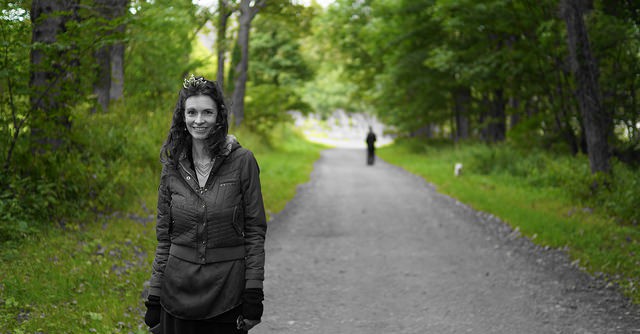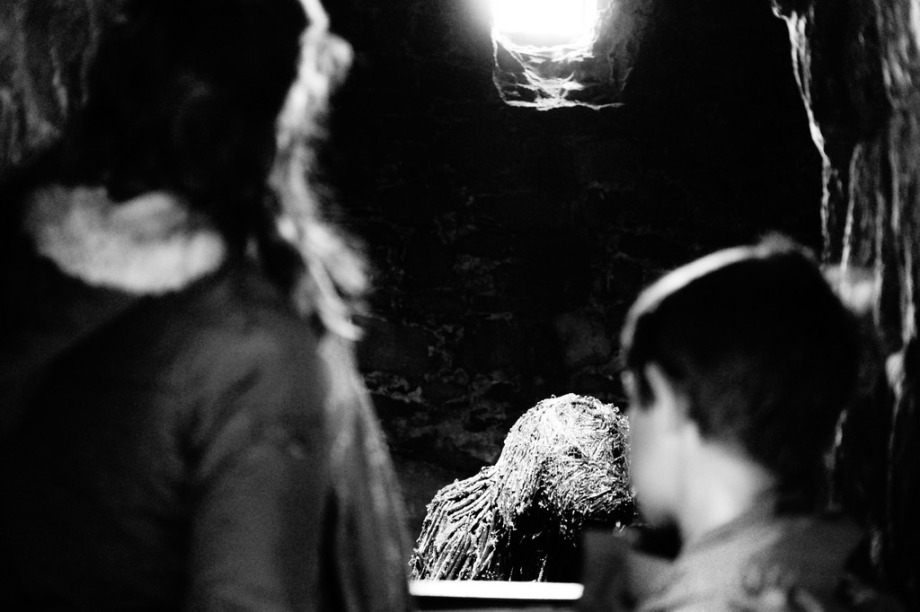
Audio Essay: Tom Fool and the Ill-Fated Lovers
Written and Narrated by Sarah Crisman
Music and Engineering by Graham Richards
Music performed by Dave Richards and Graham Richards
Muncaster Castle has been home to my family, the Penningtons for over 800 years — three generations live there today, along with numerous ghosts. Muncaster is believed to be one of England’s most haunted buildings. Paranormal researchers have spent over 20 years studying centuries-worth of unexplained events. Many eerie happenings are attributed to the most famous castle ghost, Tom Fool, usually heard walking the halls and sneaking up close behind visitors.
Known in life as Thomas Skelton, the last Fool of the Pennington family, Thomas’ 16th century misdeeds were far darker than a few bumps in the night. Two of the Muncaster ghosts knew Tom Fool in life and death: Richard, a lovestruck, headless carpenter (reportedly seen wandering the grounds), and my headstrong, weeping ancestor Helwise Pennington — now believed to be the Grey Lady drifting through the halls of Muncaster. They are known in English folklore as the Ill-Fated Lovers.
Thomas Skelton served faithfully as steward to the lord of Muncaster and as tutor to the Pennington children. He is said to have known Shakespeare — even rumoured to be the inspiration for King Lear’s Fool.
In the 2008 documentary Castle Ghosts of England, presenter Robert Hardy explains: “In Muncaster’s long story, there is no more malevolent character to judge by events than Thomas Skelton.”
In 1585, a scandal broke when the castle lord’s fiery daughter, Helwise, fell in love with the village carpenter, Richard. The rebellious affair would not go undiscovered. On May Day, Helwise donned a country hoodie and stole away to the May Pole dance in nearby Ravenglass. When she patently refused to dance with a cocky villager and chose instead the modest carpenter, the lovers were quickly given away. The jilted villagers followed the couple to Muncaster, where they discovered Helwise was the Lady Pennington and thusly engaged to their hunting buddy, Sir Ferdinand Hoddleston of Millum Castle. Knowing full well Sir Ferdinand’s pride and considerable artillery, they set off for Millum Castle to tattle on Helwise, thus sealing the fate of her illicit lover.
The disappointed Sir Ferdinand refused to rest until his rival was abolished. He rode to Muncaster and found a smug Tom Fool laughing about misguiding a traveler off to the treacherous quicksands of the River Esk. Thomas rose to the occasion, as he believed Richard had weezened sheckels from his pile of shillings.
According to Castle Ghosts of England, Thomas lured Richard to the castle under the pretense of meeting his adorable Helwise. Once there, he poured a heavy cider until Richard was insensibly drunk. Thomas used the carpenter’s own tools — a hammer and broad chisel — to hack off the carpenter’s head.
“He’ll not find where I’ve hidden his head so easy he did my shillings.” said Tom Fool. H
elwise’ fate was published in 1824 among the Remains of John Briggs:
“Her heart was cold, and no human power could warm it. The noisy mirth of the hall, she could hear unmoved — the mazy intricacies of the festive dance could not reanimate her — the glowing beauties of the summer landscape were gloomy and dull as December. She resolved to seclude herself from the giddy world, and brood over her own sorrows in a nunnery. She therefore retired to the Benedictine Convent of Maiden Castle — the ruins of which are still visible behind the higher end of Soulby Fell; where she passed her few remaining days in piety and silent solitude.”
Thomas Skelton drown in the River Esk around 1600.
To learn more about Muncaster Castle and help bring these ghost stories to life, please consider supporting our Kickstarter Campaign.




